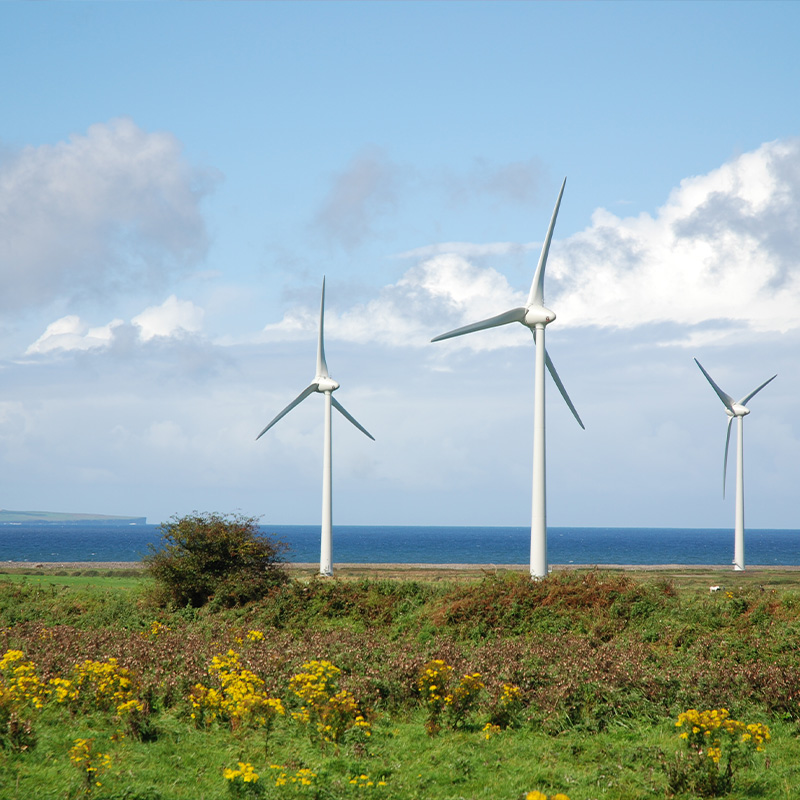
More than a bit of a breeze; Wind Energy in Ireland
More than a bit of a breeze; Wind Energy in Ireland
By Nathan Quinn, Energy Generation & Storage UK & Ireland, nathan@greenrecruitmentcompany.com
A favourable wind from 2019…
Last year, wind energy in Ireland grew by 463MW, taking the countries installed capacity to 4.1GW with the technology accounting for 32.5% of the countries power mix. That energy mix figure second only to Denmark (which has 41%). In fact, 24 new wind farms were connected in 2019, and early signs are that 2020 will be another bumper year for wind energy generation.
Wind energy is also proving to be highly attractive to range of investors, Greencoat Capital are particularly bullish having recently grown its portfolio to include 15 wind farms, making it Ireland’s second largest wind energy operator, last year they generated 1,154GWh from their Irish wind farms. Elsewhere EDF have entered the Irish market having acquired a 50% stake in the Codling Offshore Wind project 13km from Wicklow, the project is expected to have a capacity of 1GW once complete. Back onshore Highfield Energy is teaming up with the Temporis Aurora Fund to finance 200MW of onshore wind assets.
In the longer-term Irish organisations have signed cooperation plans with organisations in Wales and Cornwall to start developing floating wind projects in the Celtic Sea.
Three challenges to overcome for growth
Although there is a great deal of positivity for wind energy in Ireland, the sector is not with out challenges. Here are the three key challenges facing wind energy in Ireland:
- Avoiding wastage. In 2019 Ireland lost 8% of its wind energy due to ‘dispatch down’ due to grid constraints. Eirgrid is by international standards good at connecting renewable energy into the grid but has been challenged by record outputs and the wider need to continually improve the grid to meet long term energy goals.
- Regulations on onshore wind. Onshore wind can be quite a contentious issue in Ireland, aside from regular planning permission clashes, there are new guidelines on the siting and noise levels of turbines. Clearly there is a need to balance local concerns against planning permissions, nor is the problem unique to Ireland, there are proposals in Germany to offer payments to those near wind turbines to fix a similar issue. The challenge is that the proposed guideline changes may seriously dampen Renewable Energy Support Scheme (RESS) auction in June by making onshore development harder.
- Not enough regulation for offshore wind. Despite wind’s success in 2019, Ireland has taken criticism from the EU for being slow in comparison to other states in developing renewable energy. At the tail end of last year, the cabinet had approved a new Marine Development Bill to help boost offshore wind development and make planning processes easier. After the recent election and subsequent uncertainty, it may take time to get the focus on offshore wind back to where it should be.
Could wind’s challenges be solar energy’s opportunity?
Wind is currently the dominant renewable energy technology on Ireland, but that success is hiding the fact that quietly, solar energy is also gaining traction in Ireland. The upcoming RESS auction has a dedicated solar category (worth potentially 10% of the total award) and Eirgrid will likely want to encourage technology that can offer a more balanced grid. Whilst it’s a bit early to talk up solar as a genuine rival to wind in Ireland, it may certainly carve out a more distinct niche for itself in the near future.
